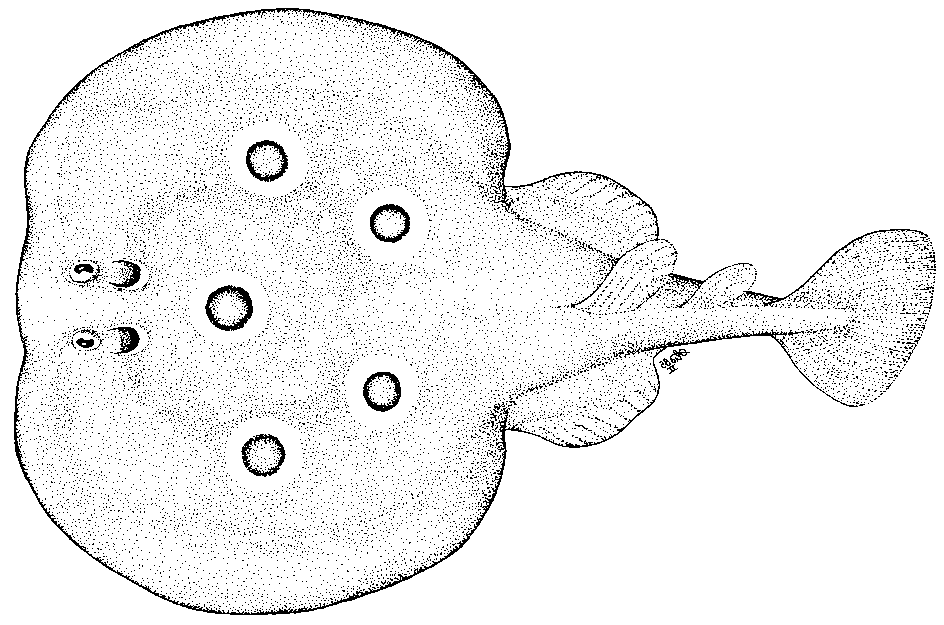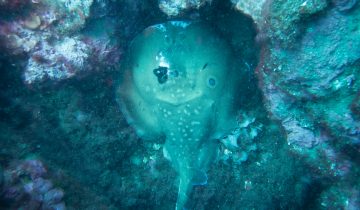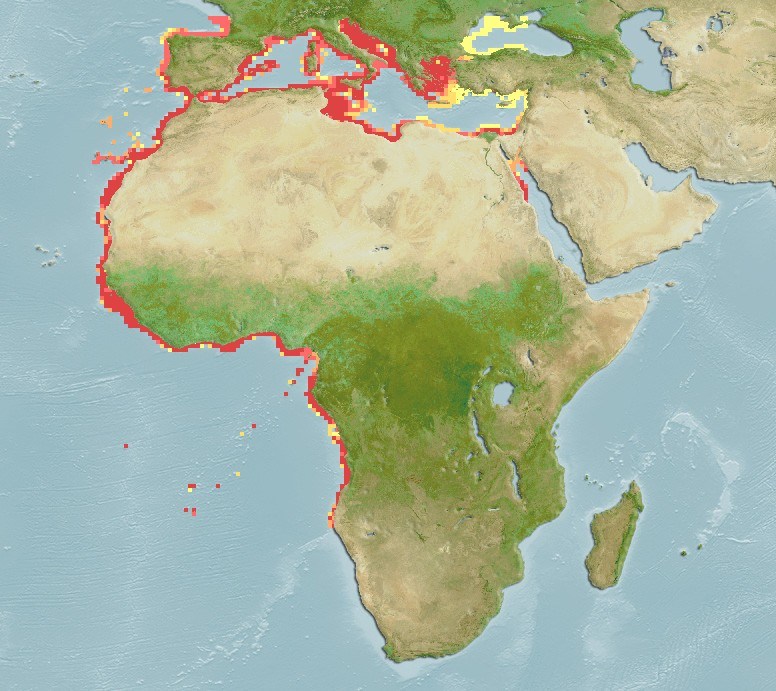Torpedo torpedo, commonly known as the common torpedo ray or electric ray, is a species of cartilaginous fish belonging to the family Torpedinidae within the order Torpediniformes. The genus name ‘Torpedo‘ comes from the Latin ‘torpere‘, meaning ‘to paralyze‘ or ‘to numb‘, referring to these rays’ ability to generate electric shocks that can stun prey or defend against predators. Torpedo torpedo is found along the eastern Atlantic coasts, from the Bay of Biscay to South Africa, and is common in the Mediterranean Sea, inhabiting sandy or muddy bottoms usually between 10 and 100 meters deep, though it can be found at greater depths.

Regarding morphology, Torpedo torpedo has a flattened, disc-shaped body with a diameter ranging from 30 to 60 centimeters in adults. Its skin is smooth and varies in color from light to dark brown, with darker spots that help camouflage it on the seabed. The most distinctive feature of this species is its ability to generate electric discharges through electric organs located on both sides of its head. These organs consist of specialized cells called electrocytes, which can produce voltages ranging from 8 to 220 volts depending on the individual’s size. This ability sets it apart from similar rays like Torpedo marmorata, which displays a more pronounced marbled spot pattern on its skin.
In terms of feeding, Torpedo torpedo is a predator that mainly consumes small fish and crustaceans. It uses its electric organs to stun prey before eating them. It lurks on the sea bottom, often partially buried in sand, until it detects nearby prey. Once it immobilizes the prey with an electric shock, it consumes it using its ventral mouth. Besides its predatory skills, it is able to adapt to varying feeding conditions, being an efficient hunter in its environment.
Torpedo torpedo is ovoviviparous, meaning embryos develop inside eggs that remain within the mother until hatching. The mother gives birth to live young, typically between 3 and 15 per litter, depending on her size and health. The gestation period lasts several months, and the offspring are born fully formed and able to fend for themselves, although they are smaller and require time to fully develop their electric organs.
An interesting fact about Torpedo torpedo is that its electric discharges have been known to humans since ancient times. In ancient Rome and Greece, the electric power of these rays was used in medicine, specifically to treat headaches and other neurological ailments by applying the ray directly to the affected area. This historical use gives the species a notable place in the history of science and medicine.
Photos:


 from
from